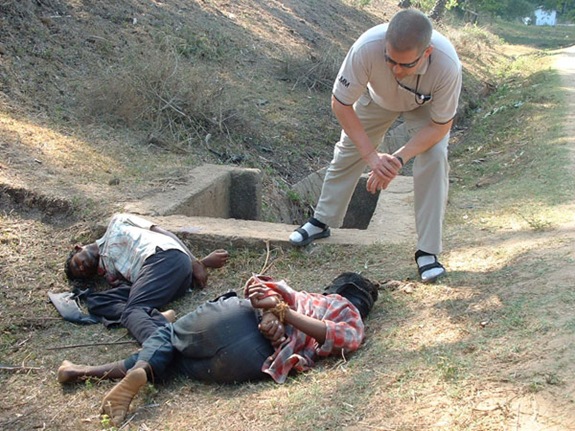Sri Lanka’s technological refutation of the authenticity of a video of Army (SLA) soldiers executing unarmed Tamil men broadcast by Channel 4 in August is based on a processed video-file taken from the broadcaster’s website, rather than the original mobile phone footage, experts said. An analysis commissioned by US-based pressure group Tamils Against Genocide (TAG) of the original video distributed by Journalists for Democracy in Sri Lanka (JDS) and Sri Lanka’s subsequent technological refutation says Colombo’s experts looked “at a second generation transcoded video to derive erroneous conclusions.”
These conclusions, the experts said in their preliminary note, do not challenge the authenticity of the shocking minute long video of Sri Lankan soldiers executing naked and bound prisoners which has re-ignited international calls for war-crime investigations.
The on-going analysis of the original video and Sri Lanka’s technological refutation was commissioned by TAG as part of the group’s wider compilation of war-crimes evidence, sources there said.
Zip archive of the massacre video
JDS has confirmed that the original recording they distributed was recorded as a .gp3 file, and all media, including Channel-4, derived their web-broadcast versions from this, TAG said.
Sri Lanka’s technology-based refutation turn on effects that stem from the H263 (.gp3) to H264 (.avi played in Flash-9, 10) conversion process, the US experts hired by TAG say in their initial note.
“The improved algorithmic features of H264, especially the de-blocking filter at the decoder, can improve the quality of the transcoded version," the experts said.
The audio/video synchronization difference pointed to by Colombo is a known possibility of the conversion process, experts said, according to TAG.
TAG said the analysis has been commissioned as part of building a dossier of war crimes in Sri Lanka to bring about prosecutions in future.
“Sri Lanka has been putting forward spurious claims in an attempt to distract the international community from the wider issue – the mass killings of Tamil civilians by artillery bombardment as well as summary executions,” a TAG spokesperson said.
Examination of the meta-data of the JDS version of .gp3 reveals a recording format of H263, and a recording time of 18th July 2009 UTC 9:06 a.m. (Sri Lanka Time UTC+ 5:30 = 2:36 p.m.), according to TAG. "While JDS said that the video was likely shot in January, the video file indicates a more ominous date of 18 July, two months after the war ended with more than 300,000 Tamils held in internment camps. Implications of this are horrible to contemplate," TAG said.

SLMM Monitor examining dumped body in Vavuniyaa during CFA
“This video captures merely one instance of the summary executions and ‘disappearances’ which Sri Lanka has practised for decades,” TAG said.
“A cursory analysis of the extensive records of the SLMM shows that since 2005 Tamils have been routinely arrested or abducted, executed and their tortured bodies dumped by roads and public places across the government-controlled parts of the island,” TAG said, referring to the Sri Lanka Monitoring Mission (SLMM).
“It is the digital age that has made it possible for evidence of war crimes to seep past Sri Lanka’s information blackout,” TAG said, adding that it understands that ‘trophy’ videos of execution and torture recorded by soldiers are being traded as mementos.
JDS received the video from a Sri Lanka Army officer, a Channel 4 report said Friday. The British broadcaster broke the story and showed the video on their flagship news program on August 25.
As international alarm and outrage mounted, on September 3, the Sri Lankan government directed the Chairman of the state run Sri Lanka Rupavahini Corporation and Independent Television Network to hand over all video tapes in relation to Vanni war front immediately to the Media Minister and to ensure and verify whether any video tapes used or unused are missing or stolen while in the custody of the two institutions.
(For updates you can share with your friends, follow TNN on Facebook and Twitter )
